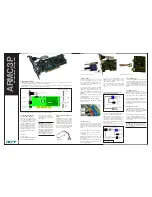
IP Configuration: RIPv2
How Rip Operates on the Device
335
Cisco 350, 350X and 550X Series Managed Switches, Firmware Release 2.4, ver 0.4
18
•
RFC1724 RIP Version 2 MIB Extension
Received RIPv1 packets are dropped.
How Rip Operates on the Device
The following section describes enabling, offset configuration, passive mode, authentication,
statistical counters, and peers database of RIP.
Enabling RIP
Enabling RIP
•
RIP must be enabled globally and per interface.
•
RIP can only be configured if it is enabled.
•
Disabling RIP globally deletes the RIP configuration on the system.
•
Disabling RIP on an interface deletes the RIP configuration on the specified interface.
•
If IP Routing is disabled, RIP messages are not sent, although when RIP messages are
received, they are used to update the routing table information.
NOTE
RIP can only be defined on manually-configured IP interfaces, meaning that RIP cannot be
defined on an interface whose IP address was received from a DHCP server or whose IP address
is the default IP address.
Offset Configuration
A RIP message includes a metric (number of hops) for each route.
An offset is an additional number that is added to a metric to affect the cost of paths. The offset
is set per interface and, for example, can reflect the speed, delay, or some other quality of that
particular interface. In this way, the relative cost of the interfaces can be adjusted as desired.
It is your responsibility to set the offset for each interface (1 by default).
















































